Meyer Turku, Aalto University Sign Pact
Finland's Aalto University and the compatriot shipbuilding company Meyer Turku have signed an agreement that will strengthen and develop multidisciplinary research and education collaboration as well as give a boost to expert cooperation."We want Finland to be the leading country in maritime technology and science development in the world. At the same time, we are constantly looking to attract new talent to work for us and so need to be present at Aalto campus and in the academic lives of the students. The agreement is a very natural extension to the already good cooperation with Aalto University," Meyer Turku CEO Jan Meyer said. "The combination of different fields and close multidisciplinary collaboration of Aalto University are an excellent foundation for innovation…
Autonomy: The Vision of Autonomous Shipping

The end of 2018 provides an excellent opportunity to highlight some of the measures that have been taken by the maritime industry over the past year to develop a better understanding of autonomous shipping. A drive towards autonomous shipping has been embraced by many major players such as Rolls Royce and Wärtsilä, and this has led to numerous new strategies, visions, and projects that are pushing the boundaries of technological innovation. It’s no longer a matter of whether technology can achieve this next step…
Nokia, ABB and Kalmar Trial 5G Technology for Harbor Automation
Nokia, ABB and Kalmar, part of Cargotec, have successfully conducted industrial trials that leverage the low latency capabilities of 5G to support time-critical applications and enhance protection and efficiency in a smart electricity grid and in harbor automation.In a joint press release the companies said that the trials, conducted as part of the Wireless for Verticals (WIVE) research project, represent one of the first real-world applications of time-critical 5G applications on electricity grid and harbor automation.URLLC (ultra-reliable low latency communications) has been identified as one of the three main usage scenarios for 5G due to its ability to transmit data, within a few milliseconds or less, with high reliability.
EU Project Aims to Improve Arctic Shipping Safety
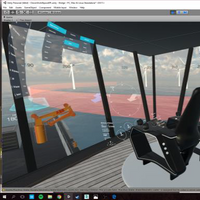
A three-year, €6.5 million ($7.7 million) research project has been launched to address safety and efficiency in Arctic ship operations. Funded by the EU’s Horizon 2020 program, SEDNA sets out to develop a risk-based approach to Arctic navigation, ship design and maritime operations. Recent years have seen a rapid increase in shipping operations in Arctic regions, as ice cover has reduced due to global warming. While this offers the potential to save significantly on voyage times…
Ship Intelligence 101
The Rolls-Royce portfolio of equipment and services extends well beyond the engine room, leveraging decades of experience in myriad business sectors. The words ‘Rolls-Royce’ can roll right off your tongue, and when they do, the average person in the maritime space probably thinks first of big, powerful, and environmentally-correct marine engines. That might have rung true just two decades ago, but today, that visual doesn’t give justice to what the firm has evolved to become. That’s also where Jay McFadyen, Rolls-Royce Senior Vice President for Ship Intelligence, comes in. In a candid interview given at this year’s SMM Exposition in Hamburg, Germany, McFadyen laid out for Marine News not only what Rolls-Royce is up to today, but also where it is headed tomorrow.
Foreship Establishes Tallinn Subsidiary
Naval architect and marine engineering company Foreship has created a wholly-owned subsidiary located in Tallinn to strengthen ties with shipowners, shipyards and marine equipment suppliers in Estonia, and support the development of locally-based design skills. Foreship OÜ will commence operations on October 1 from its own premises, located in the brand new Öpik building within sight of Tallinn Airport, Lake Ülemiste and Tallinn Old Town. The new company, which is 100 percent held by Helsinki-based Foreship Ltd, will be headed by Estonian national and structural engineer Sven Varushkin. Initially, Varushkin will be joined by two further Estonian structural engineers…
Rolls-Royce Outlines Visions for Autonomous Shipping

A new whitepaper from the Rolls-Royce led Advanced Autonomous Waterborne Applications Initiative (AAWA) outlines the project’s vision of how remote and autonomous shipping will become a reality. “This is happening. It’s not if, it’s when,” said Oskar Levander, Rolls-Royce, Vice President of Innovation – Marine, speaking at the Autonomous Ship Technology Symposium 2016 in Amsterdam. “The technologies needed to make remote and autonomous ships a reality exist. The AAWA project is…
Rolls-Royce to Lead Autonomous Ship Research
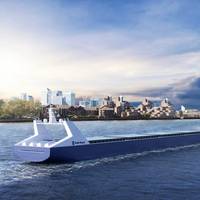
Rolls-Royce announced it will take the lead on a €6.6 million project that could pave the way for autonomous ships. The Advanced Autonomous Waterborne Applications Initiative will produce the specification and preliminary designs for the next generation of advanced ship solutions. The project is funded by Tekes (Finnish Funding Agency for Technology and Innovation) and will bring together universities, ship designers, equipment manufacturers and classification societies to explore the economic…
Futuristic Bridge Concept by Rolls-Royce
In 2013 alone, Rolls-Royce invested £1.1 billion on research and development while at the same time supporting a global network of 31 University Technology Centers, which position Rolls-Royce engineers at the forefront of scientific research. Today, Rolls-Royce predicts that Ship Intelligence will be the next major transition for the shipping industry as ships become ever more complex. As that happens, managing high levels of data in order to operate on-board systems will be a big part of that reality. At first, says Roll-Royce, this will better manage propulsion and navigation systems. Later, it could potentially lead to autonomous vessels.
Next Generation Bridge Concept
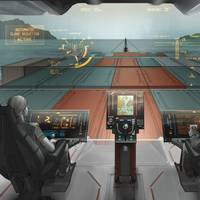
For decades the maritime industry has long-theorized of emulating the “airline model” in uniformity and technical capability of its own ship and boat integrated bridge platform. Enter Rolls-Royce and the VTT Technical Research Center of Finland which together have launched a ship intelligence system that it believes could be the next major transition for the shipping, able to gather, process and reasonably present increasing amounts of complex and high-level data from onboard systems to manage propulsion, navigation and potentially lead .to autonomous vessels.
Rolls-Royce, VTT Unveil Futuristic Bridge Concept
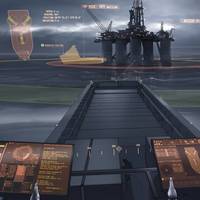
Rolls-Royce, together with VTT Technical Research Center of Finland, unveiled its latest vision of Ship Intelligence, a bridge concept which it said could become reality by 2025. Rolls-Royce has worked together with VTT’s researchers and Aalto University to develop the new bridge, known as the Future Operator Experience Concept or ‘oX’. It offers the crew smart workstations, which automatically recognize individuals when they walk into the bridge and adjust to their own preferences.
Finland Has the Arctic Maritime Technology Edge: Arctia CEO
According to CEO Tero Vauraste of Arctia Shipping, who spoke at a recent Arctic research seminar at the University of Turku, Finland has great potential in the maritime technology of the arctic region. The University says that Vauraste sees three trump cards in the Finnish arctic strategy from the point of view of business and investment policy: maritime technology, mining and tourism. At the moment, there are about a hundred icebreakers in the world and 60 of them were built in Finland. Most of the current icebreakers are rather old and it has been estimated that in the next few years there will be a need for even 150 new icebreakers. Finland has great potential and technological know-how in the icebreaker business.
Board Changes at Aker Arctic Technology
After the acquisition of 66.4% of the shares by Finnish Industry Investment Ltd (fully owned by the State of Finland) Aker Arctic Technology Inc.’s extraordinary shareholders’ meeting today appointed the new Board of Directors for the company. Ole Johansson was nominated Chairman and Juha Marjosola Vice-Chairman of the Board. The board members are Ole Johansson, Juha Koskela (ABB Oy), Antti Kummu (Finnish Industry Investment), Valborg Lundegaard (Aker Engineering & Technology A/S) and Juha Marjosola (Finnish Industry Investment). Ole Johansson, BSc (Econ.) served as the President&CEO of Wärtsilä Corporation from 2000 to 2011. He is the Chairman of eQ Oyj and member of the Board of Svenska Handelsbanken AB.
Lloyd’s Register Funds Arctic Shipping Research Center

Aalto University, together with three other universities, has received significant funding for an international Research Center of Excellence for Arctic Technology from Lloyd’s Register Foundation (LRF). After an extensive international tendering process for fundamental research projects, LRF has established a Research Center of Excellence in Arctic Shipping and Operations. The Center will be headed by Aalto University. Also taking part are Helsinki University, the Norwegian University of Science and Technology NTNU (Trondheim) and Memorial University of Newfoundland (St. John's, Canada).
Energy Efficiency, Vessel Versatility Central in Future Maritime Transportation
The future dry cargo vessel must be able to adjust quickly to changing transportation needs. The Finnish industrial production structure is anticipated to change and therefore maritime transportation ought to be tighter integrated to production chains. The cargo ship must be versatile and flexible as the transportation needs and cargo types may change within short time intervals. In light of energy efficiency, LNG is considered the best near future marine fuel alternative. These results are presented in three individual Master´s thesis produced at Aalto University. Based on a comprehensive analysis of the Finnish international maritime transport volume development and change factors of the industrial and operational environment, an optimal future vessel concept was established.
Damen Introduces Arctic Towing Supply Vessel Concept
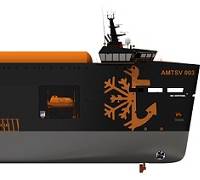
Last February, five Maritime Engineering bachelor students of the Delft University of Technology (the Netherlands) finished their Minor on Arctic Engineering. In cooperation with Damen Shipyards Group and other partners this project has now resulted, amongst others, in a new Arctic vessel: the Damen AMTSV (Arctic Modular Towing Supply Vessel). The 100-meter double acting supply ship is capable of operating in the Barents Sea year round and in the Baffin Bay and Beaufort Sea for 8 months. The AMTSV has the ability to sail through 1.6 meters of level ice at three knots.
New Fatigue Model Leads to More Durable Ships

Heikki Remes, a researcher at the Aalto University in Finland, has developed a model making it possible to determine how fatigue sets in with various welded steel materials. The model allows for the development of lighter structures, and as a consequence, more energy-efficient ships. By utilizing modern manufacturing technology and new materials, it is possible to achieve more efficient structures than the ones that currently exist. In addition, better physical models are needed to ensure structural strength, Remes said.
New Fatigue Model Leads to More Durable Ships
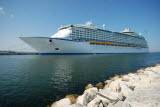
Heikki Remes, a researcher at the Aalto University in Finland, has developed a model making it possible to determine how fatigue sets in with various welded steel materials. The model allows for the development of lighter structures, and as a consequence, more energy-efficient ships. By utilizing modern manufacturing technology and new materials, it is possible to achieve more efficient structures than the ones that currently exist. In addition, better physical models are needed to ensure structural strength, Remes says.
Wärtsilä Opens New University R&D Facility
The new Wärtsilä Innovation Node is situated at the heart of the Aalto University campus in Espoo, Finland. Wärtsilä' recently opened Innovation Node brings business experts, students and researchers to the same venue to stimulate creativity and boost effectiveness as well as the cross-disciplinary nature of Wärtsilä’s research and innovation activities. “It is hard to interact in physically separate venues. We want to encourage creativity by uniting the brain power of business professionals, researchers and young talent in the same space,” says Ilari Kallio, Director of Research and Innovation Management, whose desk among a few others is now located on the first floor of the Open Innovation House.
S.A. Agulhas II
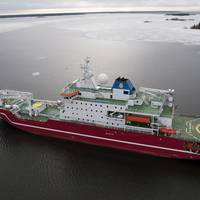
The Polar Research Vessel S.A. Agulhas II has been built by STX Finland for the South African Department of Environmental Affairs (DEA). The ship is a modern and sophisticated research vessel, commissioned to the DEA in May 2012, built to replace the S.A. Agulhas after 33 years of service. The ship will support the South African National Antarctic Expedition (SANAE IV) base on the Antarctic continent, a base which conducts research in the fields of physical sciences, earth sciences and life sciences.





